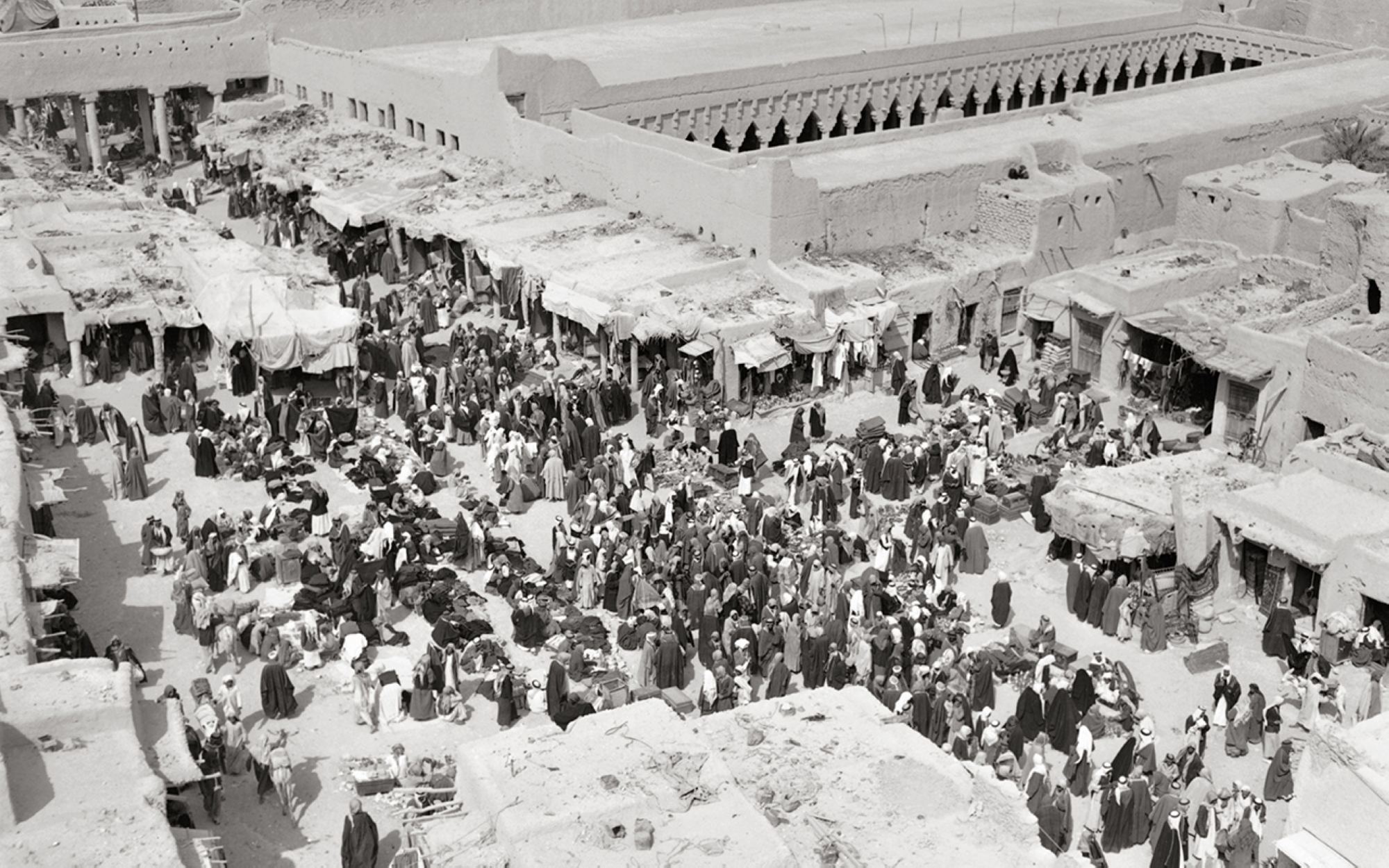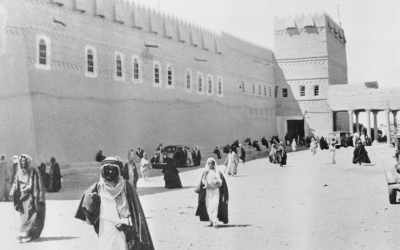





The history of the Kingdom of Saudi Arabia is linked to the Arabian Peninsula, as the Kingdom constitutes its largest segment. It has emerged as the region's predominant force, civilization, and leadership after the Islamic State and the Rashidun Caliphate, rendering it the most significant historical transition in the Arab region for centuries.
The modern history of Saudi Arabia began with the establishment of Diriyah in 1446 by the ancestor of the House of Saud, Mani bin Rabiah al-Muraidi. This establishment continued until the reign of Imam Muhammad bin Saud, who elevated Diriyah from a city-state to the capital of the vast state, marking the formation of the first Saudi state in 1727. With the end of the first Saudi state in 1818, the second Saudi state was reestablished by Imam Turki bin Abdullah bin Muhammad bin Saud in 1824. With the end of the second Saudi state in 1891, the Saudi State was reinstated for the third time by King Abdulaziz bin Abdulrahman bin Faisal bin Turki bin Abdullah bin Muhammad bin Saud, with the recovery of the capital, Riyadh, on January 15, 1902.

Unification of Saudi Arabia
It took over thirty years for Saudi Arabia to complete its third-phase unification, which involved bringing together all regions and cities. Commencing in 1902, the unification project culminated in the issuance of a royal decree on September 19, 1932, officially establishing the unified country as the Kingdom of Saudi Arabia. Since its inception, the state has emphasized spreading knowledge and education and attained political independence. The pace of the economy evolved rapidly, and this was reinforced by the extractionof oil and minerals.
Several titles were given to the founder of the Kingdom, including Imam, prince of Najd, leader of its Tribes, sultan of Najd and its regions, king of Hejaz and Najd and its regions. In 1932, he was officially known as the king of the Kingdom of Saudi Arabia.
The announcement of Saudi Arabia's unification was made on Thursday, September 23, 1932. This date was established as National Day, falling on the first day of Libra. On January 27, 2022, a royal decree was issued, officially designating February 22 of every year as the Founding Day, a day to commemorate the establishment of the Saudi State. This decision stems from the close connection between its citizens and their leaders since the time of Imam Muhammad bin Saud three centuries ago, marking the start of his establishment in mid-1727 of the first Saudi state, which lasted until 1818.

Formation of laws in Saudi Arabia
The formation of administrative laws in Saudi Arabia began with the Council of Representatives, the Shura Council, the Province administration, the Supreme Judicial Council, and the Sharia courts, as well as several ministries, including Foreign Affairs, Finance, Defense, Transportation, Health, and Interior.
The Saudi Arabian Monetary Authority (currently known as the Saudi Central Bank) was founded to oversee currency affairs. Services provided to pilgrims were improved, and directives to expand the Two Holy Mosques were issued. The Directorate General of Hajj was established, along with health quarries, roads, and various means of transportation. The Council of Ministers was formed in the later years of the founding King Abdulaziz bin Abdulrahman al-Saud.
To establish stable settlement areas and provide essential social services, the government worked on settling its citizens from nomadic tribes. This involved establishing new settlements (known as Hajr,) guiding their involvement in irrigation, agriculture, and trade activities, and transforming villages into urban centers capable of competing with cities in terms of social development. The history and unification of Saudi Arabia were characterized by citizens' voluntary enlisting in the military and self-sourcing their equipment, believing in the principle of uniting the region under the banner of the Saudi state and the House of Saud to ensure security and spread peace.

Prosperity of Saudi Arabia
In its early days under the rule of King Abdulaziz, Saudi Arabia encouraged the advancement of education, the dissemination of knowledge and various publications, the founding of schools and the issuance of their laws, the establishment of libraries, and the provision of cultural services. The Kingdom achieved political independence, distancing itself from international disputes and world wars. The founding King Abdulaziz worked to strengthen the standing of the Saudi state despite the difficult circumstances surrounding the region, which posed a challenge to the modern Saudi state.
Foreign policy occupied a significant portion of Saudi Arabia's concerns, showing interest in Arab and Muslim issues and supporting the independence of several Arab and Islamic countries. The pace of the economy evolved rapidly, and this was reinforced by the extraction of oil and minerals. There was a manifold increase in trade relations with international countries and the expansion of domestic trade movement. Saudi Arabia also attracted global technologies, harnessing their benefits within its borders.
It struck a balance between tradition and modernity by establishing security in cities, villages, and settlements, effectively deterring targeted attempts to destabilize people and their properties. This led to the development of modern urban centers while preserving their heritage and ancient customs.
In its early days, Saudi Arabia joined international organizations and entered into several agreements, including the United Nations Charter in 1945. It also participated in the establishment of international organizations, such as the Arab League in 1945.
Death of the Founding King
The founding King Abdulaziz bin Abdulrahman al-Saud passed away on November 9, 1953, after establishing the Kingdom, unifying all its regions and cities, developing the necessary governance laws, and adopting its emblem and flag.

Rulers of Saudi Arabia
After the passing of King Abdulaziz, his son, King Saud bin Abdulaziz al-Saud, ruled the Kingdom from 1953 to 1964. He was succeeded by King Faisal bin Abdulaziz al-Saud from 1964 to 1975, followed by King Khalid bin Abdulaziz al-Saud from 1975 to 1982, then King Fahd bin Abdulaziz al-Saud from 1982 to 2005, and finally King Abdullah bin Abdulaziz al-Saud from 2005 to 2015. Since 2015, the Custodian of the Two Holy Mosques, King Salman bin Abdulaziz al-Saud, has been ruling.
Related quizzes
Related articles

